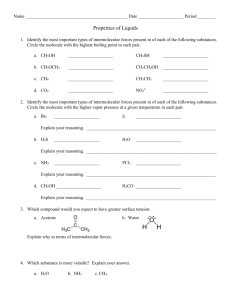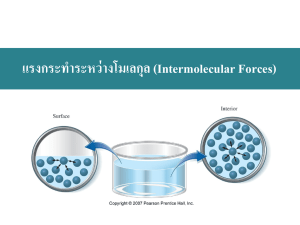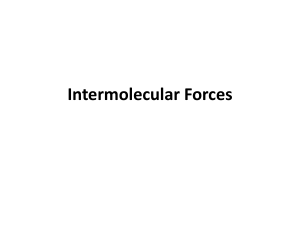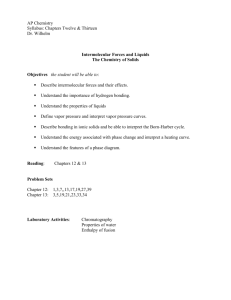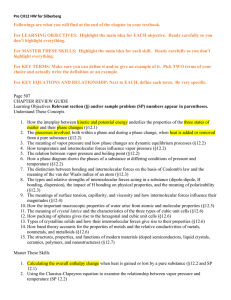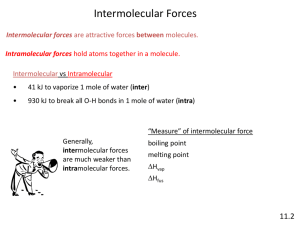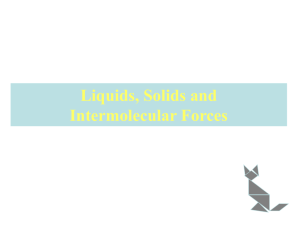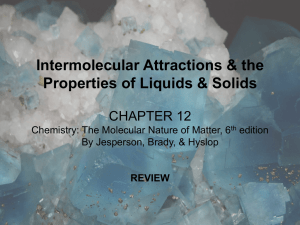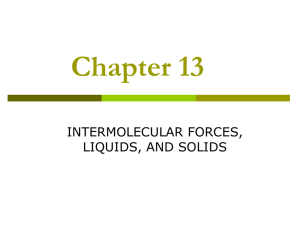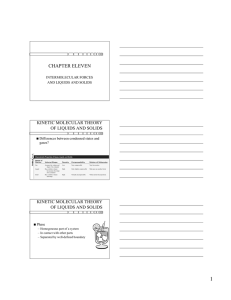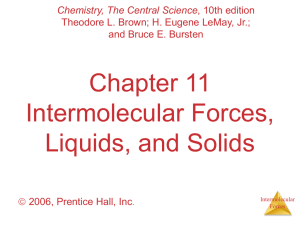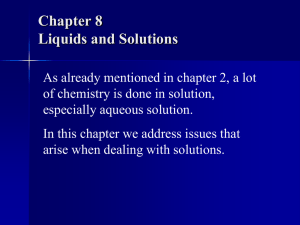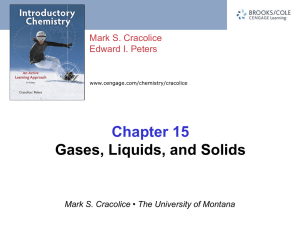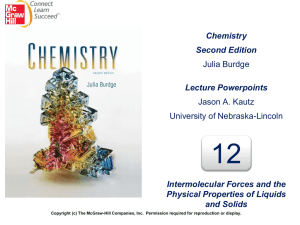Chapter Eleven Outline: Intermolecular forces, Liquids and Solids
advertisement
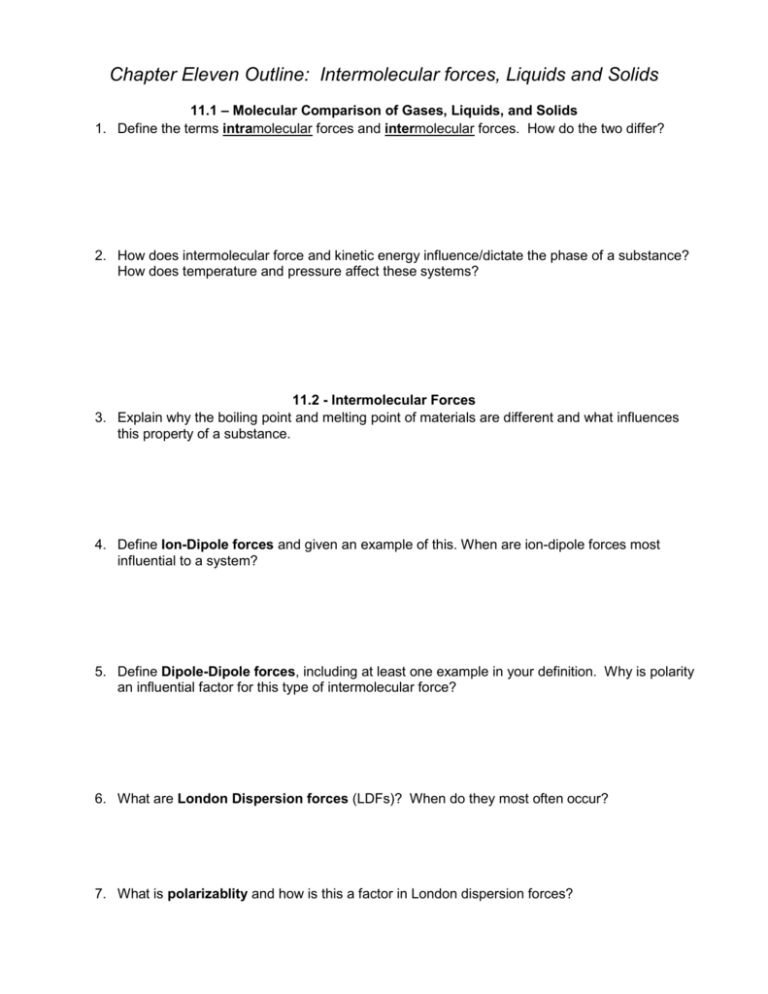
Chapter Eleven Outline: Intermolecular forces, Liquids and Solids 11.1 – Molecular Comparison of Gases, Liquids, and Solids 1. Define the terms intramolecular forces and intermolecular forces. How do the two differ? 2. How does intermolecular force and kinetic energy influence/dictate the phase of a substance? How does temperature and pressure affect these systems? 11.2 - Intermolecular Forces 3. Explain why the boiling point and melting point of materials are different and what influences this property of a substance. 4. Define Ion-Dipole forces and given an example of this. When are ion-dipole forces most influential to a system? 5. Define Dipole-Dipole forces, including at least one example in your definition. Why is polarity an influential factor for this type of intermolecular force? 6. What are London Dispersion forces (LDFs)? When do they most often occur? 7. What is polarizablity and how is this a factor in London dispersion forces? 8. What are the two general guidelines for comparing the relative strength of intermolecular attraction between two substances? 9. What makes Hydrogen bonding unique compared to other forms of intermolecular attractions. 10. Define some of the unique properties of water that are related to hydrogen bonding. 11. Summarize and compare intermolecular forces described above according to strength and properties. Provide explanations to support your summary (fig. 11.12-very helpful) 11.3 – Some Properties of Liquids 12. What is viscosity and how does it relate to intermolecular forces? 13. Define surface tension. What is the difference between cohesive and adhesive forces, as they apply to liquids? 11.4 – Phase Changes 14. Review the phase change diagram provided in figure 11.17. Confirm your understanding of these phase changes and associated energy requirements. 15. Review the energy requirements to undergo phase changes as described in Figure 11.19 and accompanying text. What do the plateaus describe? How about the regions of steady temperature change? 11.5 – Vapor Pressure 16. Define vapor pressure. Why this condition is considered a dynamic equilibrium? 16. How does vapor pressure relate to volatility? 18. How does temperature influence vapor pressure? What is normal boiling point? Be able to interpret a vapor pressure curve. 11.6 – Phase Diagrams 19. What does a phase diagram represent? 20. Copy the phase diagram described in Figure 11.26. Be able to define critical point and triple point. 21. What are some ways to “manipulate” a substance in order for it to change phase (i.e. making dry ice (CO2(s), or liquid nitrogen N2(g))?


